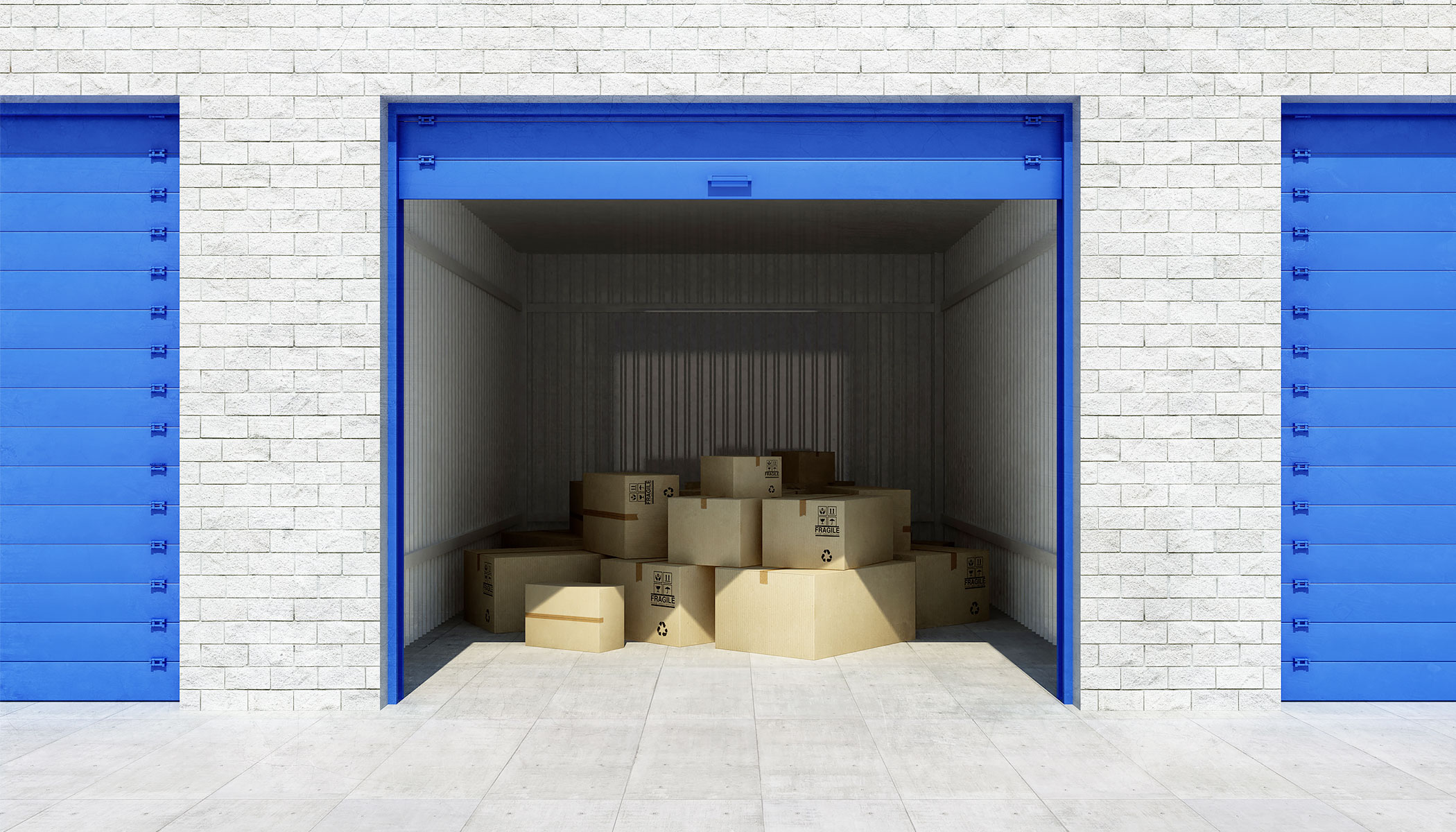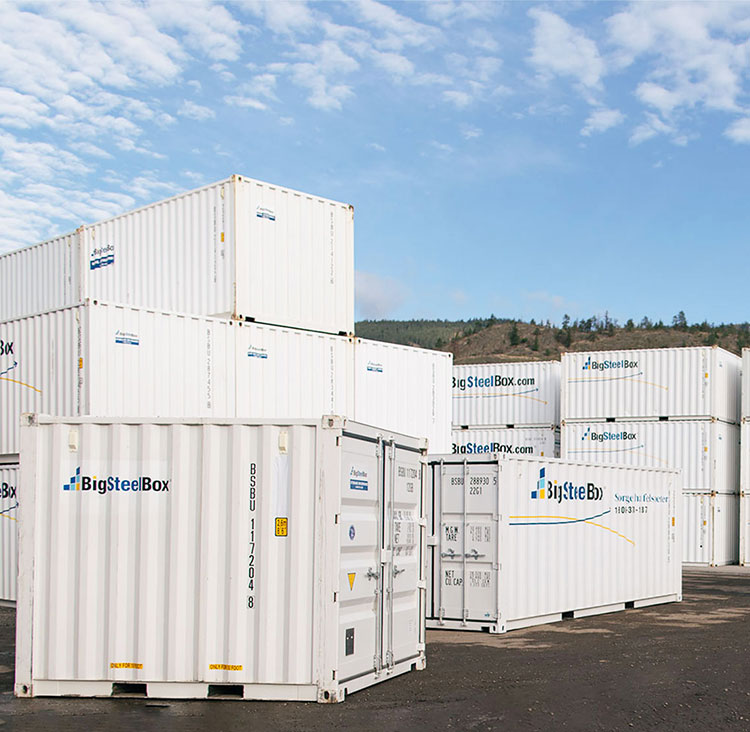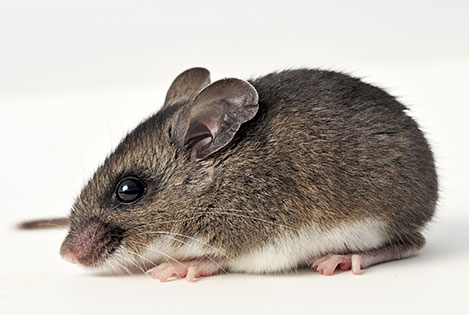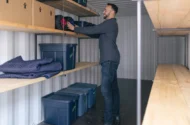
Tips to Avoid Rodent Infestations in Self-Storage Lockers
How to Avoid Rodent Damage in Storage Units
Post updated September 5, 2023
If you’re looking for a long-term storage solution and you’re considering moving your things into a self-storage facility, such as a storage locker or mini storage, you should consider the possibility of rodents getting into your storage unit.
Self-storage facilities invest a lot of time and money into protecting customers’ units from theft and vandalism, but a threat that is often overlooked is that of mouse or rat infestation.

Portable storage units that are actually shipping containers, like BigSteelBoxes, are weather and rodent-proof.
Most storage facilities and some mobile storage units, however, have roll-up doors and are more susceptible to rodents because they’re not completely sealed. This can be the case with an indoor storage locker or a mini-storage, where you drive up to an exterior door.
If you’re weighing the options of renting a storage container versus storing your things in a storage locker, possible rodent damage is something you should consider before you make your final decision.
Things to consider when choosing a storage company:
-
-
- What types of items will you be storing?
- How long will you need storage?
- Will you be accessing your things on a regular basis?
-
Is renting a portable storage container a good option to avoid rodent infestations?
Renting a portable storage container, like a BigSteelBox, is a good option if you have room on your property for a container to be placed. You can store your BigSteelBox on your property, or you can have it stored at one of our secure locations. However, even for people who live in apartment or townhome communities that don’t have room to have a container delivered, there is still the option to bring your items to the storage yard and load a container on-site.
One of the biggest advantages to using a company like BigSteelBox is that our storage units are actually shipping containers, which means they are completely rodent-proof and one of the most secure storage options out there. So, regardless of where you store your BigSteelBox, you’ll have peace of mind knowing your things are safe inside the sealed container. Plus, all of our rental containers come equipped with a Lock Box that protects your padlock from bolt cutters, adding another layer of security.
But, if a self-storage facility is still something you think will work best for you, here are some things to help you avoid problems caused by rodents in storage units, and some ways you can protect your belongings.
What are the risks of rodent infestation and damage with self-storage lockers?
Established and well-managed self-storage facilities usually take appropriate measures to control rodent infestations. They will often offer their renters advice on what can be stored and what should not be stored in their lockers. They may even have storage restrictions. However, there is never a guarantee that all renters will follow these rules or that rodents won’t still decide to make a storage locker their new home.
The vast majority of storage lockers are NOT completely sealed, which means that rodents often find their way in. Storage lockers provide warmth and shelter, and because they’re rarely visited by the renter, they’re usually left undisturbed for long periods of time. This makes them the perfect place for an infestation.
And this problem doesn’t end with just the one unit. Mice and insects only need the tiniest space or hole to get into neighbouring lockers as well. Most insects can fit through an opening as thin as a credit card, and mice can squeeze through holes as small as a pencil (¼ inch).
Mice and rats are a leading concern in this type of environment because they reproduce quickly. In fact, a female house mouse can give birth to up to a dozen babies every three weeks!
Before signing the rental contract and moving your things into a self-storage locker, be sure to visually inspect the facility, as well as your storage unit. Here’s what you should watch out for before moving your stuff into a storage locker:
- Look for signs of mice droppings, torn fabric or papers in other areas of the facility.
- Inspect for holes or gaps in the unit that might be an entry point for a rodent.
- Ask the facility if they have had problems with rodents in the past and what their policy is when an infestation happens.
- Read your contract closely – some facilities may waive any responsibility if your items are damaged as a result of rodent infestation.
Unfortunately, most self-storage facility operators have little to no control over the types of things their customers choose to store. So, if a renter is storing items that are especially attractive to pests, such as food, live plants, or paper goods, there is a higher likelihood an infestation can occur.
Once inside a unit, rodents can cause severe damage in a short amount of time. They will eat and chew just about anything including cardboard, paper, furniture, bedding, clothing, wiring and even plastic materials.
This can result in hundreds or thousands of dollars in damage, but what’s even more concerning is that one mouse produces between 40 and 100 fecal droppings per day, which can accumulate quickly and become a health concern. In particular, the health hazard those droppings can cause is an illness called Hantavirus Pulmonary Syndrome (see more on this below).
Rodent Damage in Storage Units – What are the Health Hazards?
 Beyond the damage that rodents can do to your personal and household items while they are in storage, these situations also pose major health risks to us humans.
Beyond the damage that rodents can do to your personal and household items while they are in storage, these situations also pose major health risks to us humans.
The main health concern that arises when rodents, specifically deer mice, inhabit an area is a condition called “Hantavirus Pulmonary Syndrome”. This illness can be extremely dangerous to humans causing a number of damaging effects.
The deer mouse lives primarily in rural areas, so storage facilities located near open fields on the outskirts of a city, or near wooded areas and farms are more susceptible. Deer mice are usually grey or light brown in colour, with white on their belly. It has large ears and a furry tail and bulging eyes. The typical house mouse found in cities are usually not a carrier of hantavirus, and they are usually entirely grey or light brown in colour with no white on their belly.
According to the Public Health Agency of Canada, Hantavirus Pulmonary Syndrome (HPS) is a disease caused by the inhalation of air contaminated with droppings or urine from infected deer mice (which can happen as a result of sweeping, for instance), or being bitten by an infected mouse.
In Canada, the majority of hantavirus cases occur in the western provinces of British Columbia, Alberta, Saskatchewan and Manitoba. Symptoms of Hantavirus Pulmonary Syndrome are similar to the flu and include fever, sore muscles, headaches, nausea, vomiting, stomachache, and shortness of breath.
In Canada and the United States, the disease is very rare, but serious. In North America, about 1 out of 3 people with HPS have died. No antivirals or vaccines are currently available, so treatment is supportive of symptoms. The virus does not pass from person to person and pets and livestock do not catch the virus so these animals cannot pass it to people.
Read on for tips on how to properly handle a rodent infestation to avoid the possibility of HPS.
Self-Storage facilities: how to get rid of mice and rats in storage units
If you’ve inspected your storage facility and have decided to store your things there, be sure to take precautions to avoid rodent issues as soon as you’ve moved your things in:
- Place sticky glue traps, mouse traps, or other types of products around the unit to catch rodents early on.
- Store your things in heavy, plastic containers with lids that seal to keep rodents out.
- Never store food items.
- Wrap your furniture in heavy plastic. Rodents leave a trail of feces and urine everywhere they go (we know, so gross!!) so the last thing you want is for them to be crawling all over your sofa or chairs.
What do I do if I suspect my storage unit is infested by rodents?
If you suspect your self-storage unit is infested by mice, the best course of action should be to first contact the management of the storage facility to notify them, then contact a professional extermination service to deal with the issue and get advice on how to handle the cleanup process.
If you choose to clean up after an infestation yourself, here are a few things you should do:
- Wear HEPA-filter face mask.
- Avoid sweeping up or vacuuming mouse droppings, which can inject viral particles into the air. Instead, wear a pair of rubber gloves and wet the material with bleach or similar disinfectant.
- Use a damp cloth to clean up the area and then spray with more disinfectant.
- Spray any dead mice with disinfectant and double-bag them for disposal.
- Disinfect, or better still, throw out the rubber gloves.
- If certain items can’t be disinfected, they can be rendered safe by exposing them to sunlight for a few hours. Ultraviolet rays kill hantavirus.
Avoid the risks of rodents in your storage unit by choosing BigSteelBox
As we mentioned near the beginning of this post, BigSteelBox storage containers are weather and rodent-proof because they’re lined with rubber gaskets along both sides of the doors to create a tight seal. They also come equipped with a Lock Box that protects your padlock from bolt cutters. In short, a BigSteelBox is extremely secure.
Plus, we bring the storage to you! When you rent a BigSteelBox, there’s no need to pack your things into a truck, move them to a storage facility, and then unpack them into a storage locker or mini storage. We’ll deliver a BigSteelBox to your home and you can take your time packing it. You can keep the Box on your property for as long as you need it – which is very convenient if you need to access your things from time to time.
Don’t have space to keep your BigSteelBox at your home long-term? No problem!
We’ll bring you a BigSteelBox, and you can load it. Then, we’ll pick it up and move it to one of our secure storage facilities. You can still get access to your container while it’s at one of our storage yards, just give your Store a call at least 1 business day before you need access, and we’ll arrange to have your BigSteelBox brought down for you.
We’re here to make storage feel better! Request your free quote today online, or call 1-800-373-1187.




